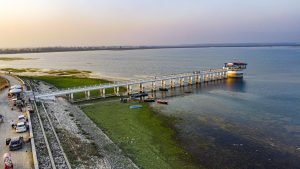Preserving Identity and Homeland: Rana Tharu Lands and the Challenge of Illegal Migration
Introduction
The Rana Tharu community, nestled in the Terai region of Nepal, has a deep-rooted connection to their ancestral lands, a bond forged through generations of stewardship and cultural heritage. However, this connection faces a growing challenge in the form of illegal migration, particularly from the Pahadi (hill) communities. In this article, we explore the intricate relationship between Rana Tharu lands and the issue of illegal migration, examining its implications, underlying causes, and the efforts to address this complex challenge.
Cultural Landscape and Ancestral Lands
The Terai region, with its fertile plains and abundant natural resources, has been the traditional homeland of the Rana Tharu community for centuries. The landscape not only sustains their agricultural practices but also serves as the canvas upon which their cultural traditions, festivals, and social interactions are woven. This deep-seated connection to the land has shaped the Rana Tharu identity and way of life.
Illegal Migration: Causes and Consequences
Illegal migration from Pahadi communities, primarily from the hill regions of Nepal, has become a pressing concern for the Rana Tharu community. Push factors such as socio-economic disparities, limited opportunities, and environmental challenges in the hills contribute to the influx of migrants seeking a better life in the Terai. However, this migration often leads to land encroachments, competition for resources, and strain on the delicate socio-cultural fabric of the Rana Tharu community.
Challenges Faced
The issue of illegal migration has far-reaching implications for the Rana Tharu community:
- Cultural Erosion: The influx of migrants can dilute the unique cultural practices, traditions, and languages of the Rana Tharu community, potentially eroding their distinct identity.
- Resource Competition: Increased population density due to migration can strain already limited resources, leading to conflicts over land, water, and other essentials.
- Socio-Economic Impact: Migrants often settle in marginalized areas, putting pressure on local infrastructure and services, and potentially affecting the socio-economic dynamics of the region.
- Environmental Concerns: Overpopulation and unsustainable practices resulting from migration can impact the fragile Terai ecosystem.
Addressing the Challenge
Efforts to address the issue of illegal migration and its impact on Rana Tharu lands are multi-faceted:
- Awareness and Advocacy: Community-based organizations and government agencies work to raise awareness about the implications of illegal migration and advocate for policy changes.
- Land Management and Documentation: Initiatives to document land ownership and boundaries can help prevent encroachments and disputes.
- Livelihood Opportunities: Creating sustainable livelihood opportunities in hill regions can reduce the push factors driving migration.
- Cultural Preservation: Celebrating and promoting Rana Tharu culture can reinforce a sense of identity and belonging among the community.
Conclusion
The challenge of illegal migration into Rana Tharu lands underscores the delicate balance between societal progress and cultural preservation. As the community navigates this complex issue, it does so with an unwavering commitment to safeguarding its identity, heritage, and ancestral lands. By fostering collaboration, raising awareness, and implementing targeted interventions, the Rana Tharu community aims to ensure that their land remains a sanctuary where traditions thrive, resources are shared responsibly, and future generations can carry forward the legacy of resilience and unity.







